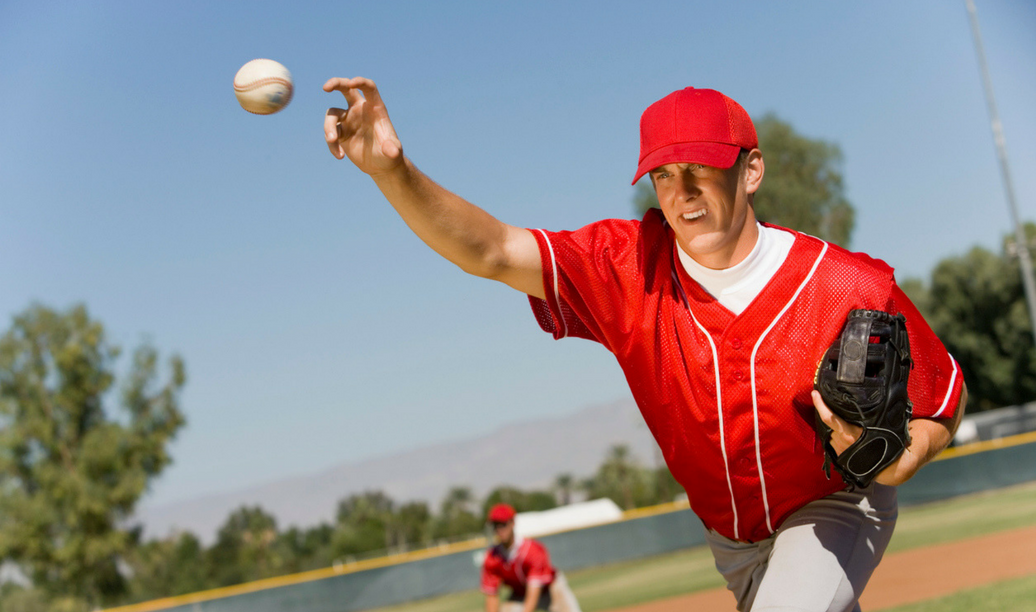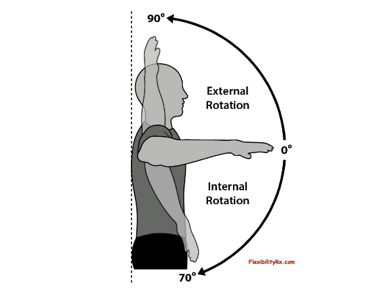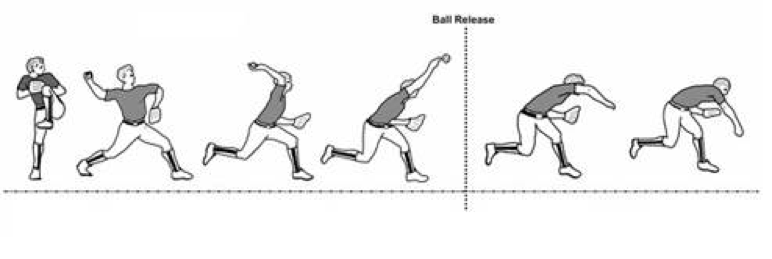
Throwing puts enormously high stress on the shoulder at high velocities. In fact, rotation during throwing, or more specifically pitching, is the fastest human movement recorded. Sports that involve repetitive amounts of throwing, often have high shoulder injury rates. One study in baseball reported that 28% of all injuries in professional pitchers were shoulder related.
So what can we do to reduce the risk of shoulder injury in the throwing athlete? While there are no absolutes, we certainly have some clues about risks of injury.
- Total range of motion is important
The image below explains the two key movements that we need to understand, external and internal rotation.
Throwing and pitching need large amounts of movement in both directions as you can see below:
Previously, the greatest focus had been on having adequate internal rotation of the shoulder. Some studies have shown that a loss of more than 20 degrees internal rotation in the throwing shoulder (compared to the non-dominant side) was somewhat associated with risk of injury. However in recent times a greater focus has been put on total rotation of the shoulder, a difference of more than 5 degrees in the throwing shoulder compared to non-throwing was associated with risk of injury.
2. Pre-season strength can reduce risk of injury
A recent study found that there was a significant relationship between the more serious shoulder injuries that required surgical intervention and pre-season rotational strength. While there wasn’t a strong association with more minor injury, it is the surgical interventions that require more prolonged periods out of sport. Therefore every effort should be made to have an adequate baseline of rotational strength prior to season starting.
3. Don’t forget total training load
The human body often reacts to sharp changes in training load, and this is certainly the case with the throwing shoulder. A sudden increase in type of throwing or total throwing volume can irritate the shoulder. Check out our blog from Tim McNally https://www.capitalclinicphysio.com.au/train-harder-and-smarter/ on training to avoid injury.
4. Throwing involves the whole body
As you can see in the image of the picture, throwing is a very dynamic activity that requires whole body movement to generate force and accuracy. It is important to also be strong through the other involved areas. Hip/lower limb weakness could contribute to not providing a solid base, particularly in pitchers.
5. Throwing technique is important
Throwing technique can play a large part in injuries as well. If someone is throwing below shoulder height, then their risk of injury is significantly higher. Retraining technique can be a critical part of management
If you have issues with throwing or pitching make sure you see one of our Physio’s who will identify underlying contributors and progress you forward through to prevention.



